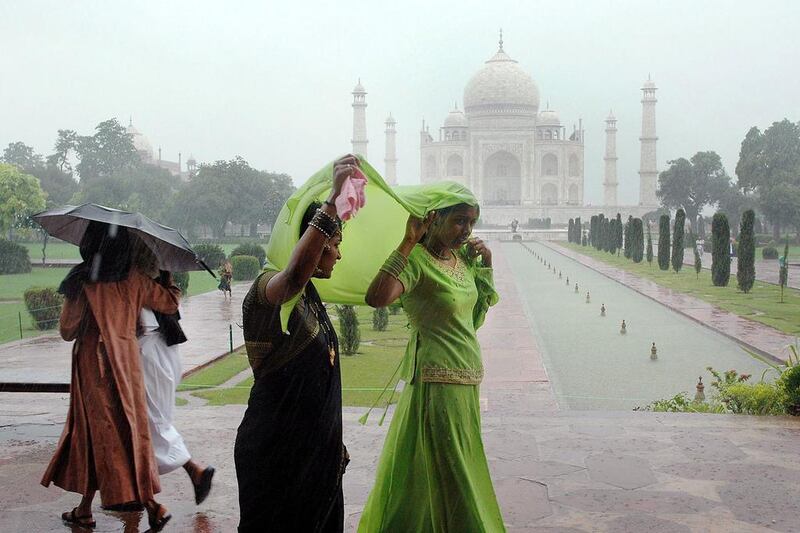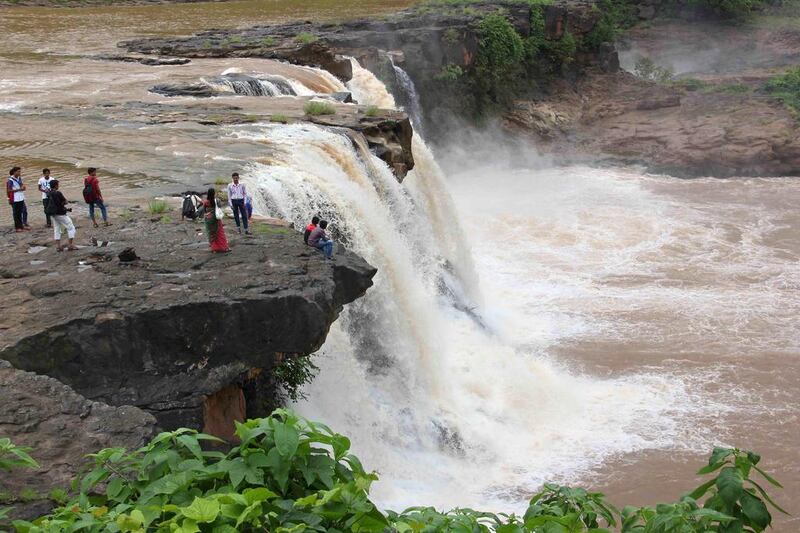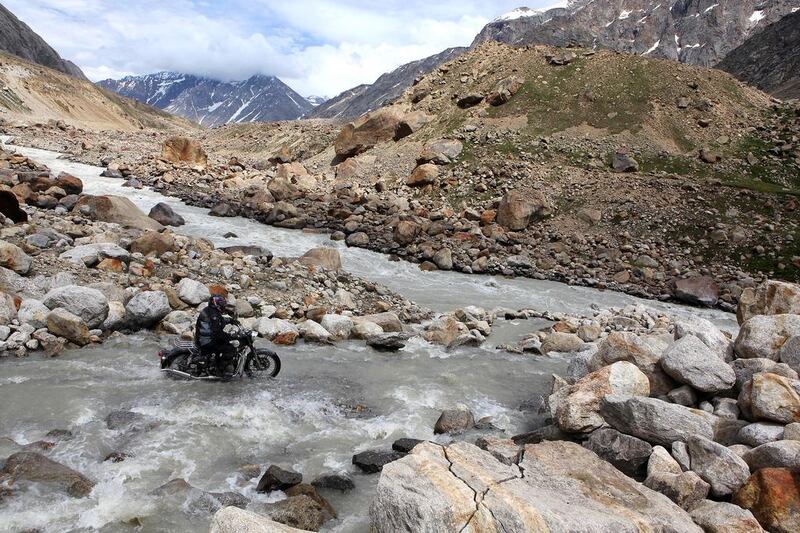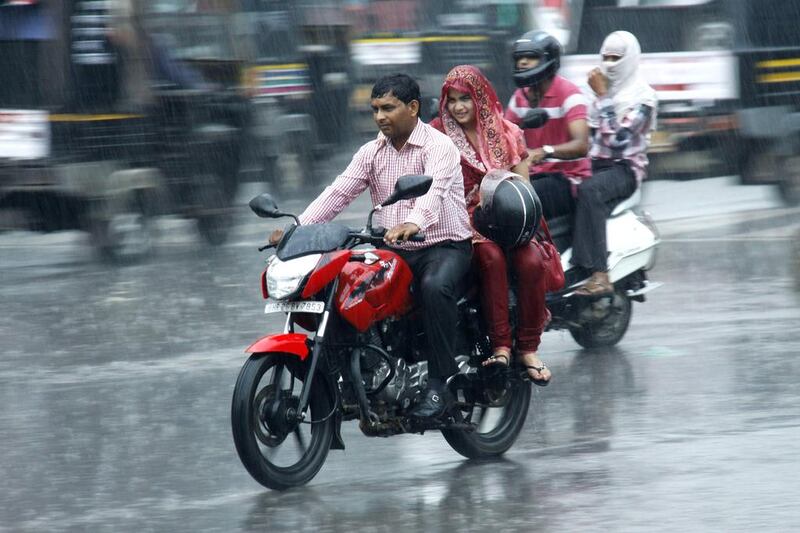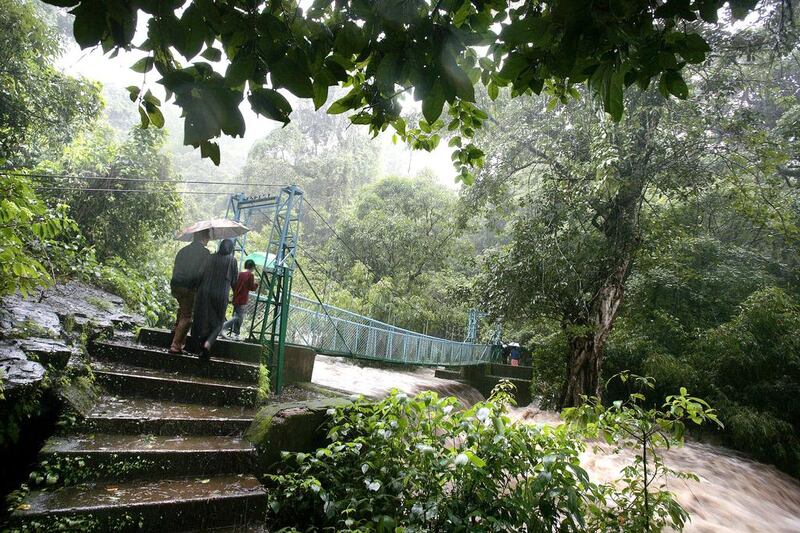For Musafirs Motorcycling, a group of motorbike enthusiasts from Mumbai and Pune, the monsoon season is the time when they conduct some of their most spectacular tours in India.
“During monsoon, the landscape comes alive with vivid colours,” says Nishan Chandran, the director of the group. “There is a saying that goes: ‘If you don’t ride in the rains, you don’t ride at all’. Imagine riding up in the clouds between greenery kissed mountains and besides milky white waterfalls – things that you will never experience in summer or winter.” Ladakh in the northern Himalayas and Hampi in the southern Indian state of Karnataka are among the destinations for the motorcyclists this monsoon season.
There has been a surge in travel by Indians within the country, or domestic tourism, in recent years during the rainy season, driven by a growing middle class and rising incomes and a slew of discounts by hotels, airlines and tour operators for the period.
With a population of more than 1.2 billion, destinations in India have an ever-expanding pool of travellers to tap and many states are increasingly focusing their efforts on attracting Indian tourists.
The total number of domestic tourist trips in India last year rose to 1.28 billion from 1.14 billion a year earlier, according to statistics from India’s ministry of tourism.
“This used to be a lean period for travelling traditionally but I think that is changing fast,” says Santosh Misra, the managing director of the tourism board of Chhattisgarh, a central state in India. “Domestic tourists have started coming out in large numbers during the monsoons. That has been a recent phenomena. Because it traditionally has been a lean season for tourists, as a result the tariffs are low in the hotels and the airlines also offer discounts. It makes good sense to travel in monsoons.”
Indians have become “a little more adventurous nowadays,” he adds.
“They realise travelling during monsoon might entail delayed or cancelled flights, flooded roads, landslides.”
Mr Misra explains that Chhattisgarh, like states in India such as Kerala, is actively trying to promote itself as a monsoon destination for Indians.
“Indians like to experience the rain,” he says. “The forests and the fields look really lush green during this time. Nature is at its best. Rivers are in full glory. It’s a very unique landscape which is on offer.”
The rainy season holds less appeal for most Europeans, who tend to seek sunny destinations, he says.
The coastal state of Goa, for example, has long been dominated by Europeans who flock there for the beaches in the months when the weather is fine. These days, Goa’s tourism industry is focusing on trying to attract Indians during the rains to shore up revenues.
“Goa’s traditional reputation as a half-yearly tourism destination is converted into a 365-day affair, as the hospitality industry across the board readies itself for tourists even when the rain churns the seas into a frenzy,” says Ameya Abhyankar, the director of Goa Tourism. “Monsoon tourism is picking up greatly in the state.”
He says that Goa is promoting monsoon tourism “in a big way” at travel exhibitions and with special deals on offer at hotels and resorts.
It is not only domestic tourists that Goa is targeting for the rainy season. The GCC is another important market for this period because of the contrasting weather conditions.
“We recently organised familiarisation trips for the Chinese and UAE travel and tour operators to increase tourist footfalls in the state” says Mr Abhyankar.
Karan Anand, the head of relationships at Cox and Kings, a travel company headquartered in India, says there are discounts of between 20 and 30 per cent on holiday packages during the monsoon season.
Goa, Kerala, Ladakh and Udaipur are among the most popular places for monsoon travel, he says.
“The tourism industry today is giving equal importance to domestic tourism because the growth in the domestic leisure sector has been phenomenal over the last couple of years,” Mr Anand says.
“One of the catalysts has an increase in flight connectivity between metros and tourist gateways such as Kochi, Delhi, Jaipur, Bangalore and the north east.”
Lavasa, a new hill city located between Mumbai and Pune, experiences peak tourism traffic during the monsoon season as it attracts Indians seeking a break from the nearby overcrowded cities.
Visitors come to enjoy the destination’s “sprawling lake, pristine green hills, rain-fed waterfalls, and cliffs” which are “at their best during the monsoon”, says Rajiv Duggal, the senior vice president of tourism, hospitality and education at Lavasa Corporation.
Industry experts agree that cheap deals are key to driving the monsoon tourism growth.
“[The] monsoon is usually very lean for travel,” says a spokesman for Jet Airways. “This year, we have seen a growth of 20 per cent during the monsoon season compared to last year. We have come up with attractive offers for our guests on both our domestic and international routes.
“Advance sales have helped to grow the traffic during the lean months. Given that all carriers have managed to run sales pertaining to the lean season, it has helped the industry in general to grow traffic.”
Kapil Bagla, the chief executive and director of Adlabs Entertainment, which owns the Adlabs Imagica theme park located outside Mumbai, says the “average Indian traveller is very price-sensitive”.
He adds: “What’s more to this is that there is a rising trend seen wherein the Indian traveller is looking for short but multiple holiday experiences in a year.”
The theme park is a short distance from Lonavala and Khandala, hill stations close to Mumbai which are popular monsoon getaway destinations for residents of Pune and Mumbai. Those flows of Indian tourists and the discounts it rolls out have helped daily visitor numbers to the park surge by 150 per cent this year compared to previous years.
“With the Indian travel and tourism industry poised to grow at over 7 per cent this year and with the rise in disposable income of an average traveller, it is safe to say that the monsoon travel trend in India is on a growth trajectory,” says Mr Bagla.
business@thenational.ae
Follow The National's Business section on Twitter
